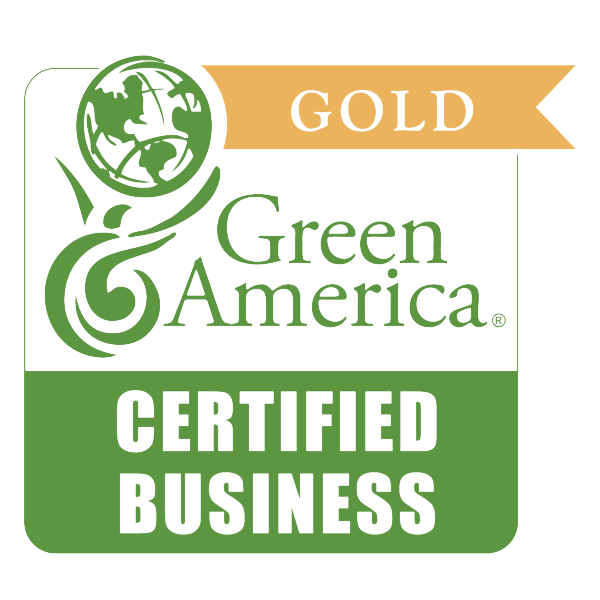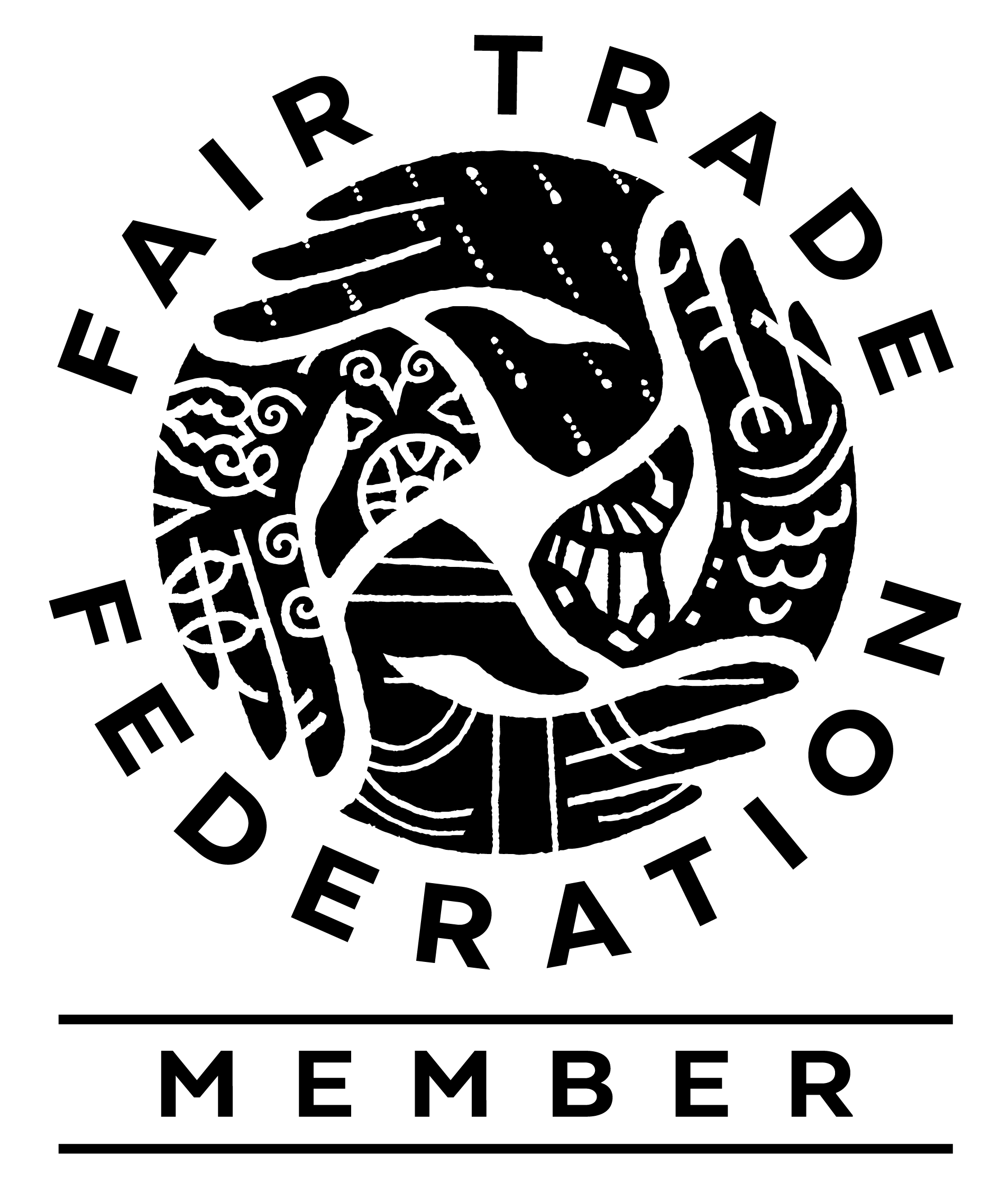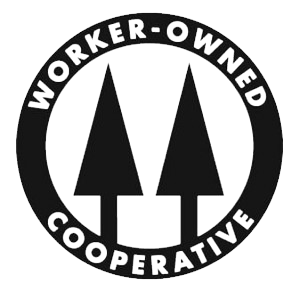When you purchase a conventional banana at a grocery store, there are certain costs that your everyday low price covers: the fruit itself; the international shipping costs; the trucking from the warehouse to the grocery stores. These costs are internalized, meaning they’re accounted for in the final price you pay.
But there are hidden costs to banana production that you won’t pay a cent for at the cash register. The medical treatment for illnesses contracted by farm workers exposed to heavy pesticides. The lost wages of plantation workers who miss work due to harassment. The loss of income for small farmers selling fruit to brokers below minimum price.
Some of the burdens are apparent immediately, like the detrimental effects of insufficient income on a family’s food security, while others will take time to fully manifest, like the consequences of climate change exacerbated by agricultural carbon emissions. Though the associated costs are linked directly to banana production, they are borne in large part by the communities surrounding farms, rather than the players downstream in the supply chain who ultimately consume the bananas.
The costs that are pushed onto farmer communities are known as externalized costs or externalities. At Equal Exchange, we discuss the externalized costs of banana production often, as they are a motivating factor in the development of our alternative, fair trade cooperative model of banana business. We know that externalities in bananas are nothing new – the historical socioeconomic ramifications of the U.S. banana industry are difficult to fathom – but even today, there has been little research dedicated to teasing apart these costs and studying how to reduce them most effectively.
That may be changing. Fair Trade International has recently released a study by the research firms TruCost/True Price to measure, for the first time, the externalized costs of the banana industry in concrete monetary terms, per 40-pound box of bananas, which is around 80 bananas. In the banana sector as a whole, the estimated figure is a tremendous $6.70 of external costs per box of bananas ($6,432 per shipping container!), 60% of which corresponds to social costs, like insufficient income, and 40% environmental costs, like water depletion. That means that for each 40 lb box of bananas produced, an additional $6.70 of external costs – not paid for by customers – are generated for producer societies to bear. However, for fair trade certified banana production (including plantations, small farmers, organic and conventional), the figure drops to $3.65 per box, mostly due to lower social costs. In other words,the fair trade groups studied generated 45% lower external costs than the sector on average.
Even within this fair trade subcategory, Equal Exchange bananas are unconventional: they’re also organic and small-farmer grown. To be specific, Equal purchases bananas from democratic cooperatives. These organizations are independent and autonomous, managed by small farmers with collective jurisdiction over the allocation of fair trade premiums and elective power over the board of directors. Equal Exchange bananas are also more expensive than conventional bananas. So, the question bears asking: what costs are included in the price of an Equal Exchange banana?
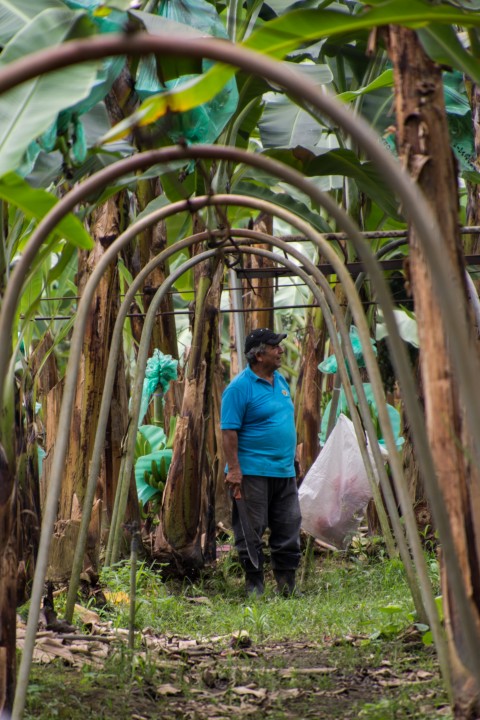
This past June, I traveled with colleagues to the southern coast of Ecuador to learn about the operations of one of our farmer co-op partners, la Asociación de Pequeños Productores el Guabo, or AsoGuabo. As a cooperative, AsoGuabo works for the benefit of its 130 farmer-members, exporting around 30 shipping containers of fresh bananas around the world each week. This is extremely ambitious work, which requires a full-time 25-person staff. AsoGuabo is considered a highly successful co-op – “la pionera” or pioneer in Fair Trade and organizational development, per co-op President Edwin Melo – within a region responsible for approximately 30% of the world’s banana trade.
When I arrived in the provience of el Oro for the first time, I was astounded by the sheer visible magnitude of the industry: miles and miles of banana plantations, as far as the eye can see, destined for supermarkets around the world, at mostly rock-bottom prices. Following a full day of farm visits, I sat at the desk of Lianne Zoeteweij, General Manager of AsoGuabo, as she worked into the evening. She explained that although large plantation owners can export containers by themselves, “a small producer can never do that. They need the association. And an association brings also more costs with it, because of course you need bookkeepers, you need logistical people, technical peoples, and so on. So, it becomes a little bit more expensive than a huge plantation.” That’s one reason it’s important for small farmers to have access to the fair-trade market.
When we visited farms on banana-packing day, while bunches were cut, cleaned, stickered, and packed into boxes to be whisked away to the warehouse, it was apparent how critical a role the long-term, skilled cooperative staff members play in AsoGuabo’s commercial success. At one small farm, we met with Marcelo Rebolledo, the Logistics and Quality Control manager for AsoGuabo. Marcelo has decades under his belt working with banana logistics, both for big companies and for AsoGuabo.

According to Marcelo, in addition to managing logistics with many farmers to pack a single container, fulfilling orders for multiple smaller independent brands – such as Equal Exchange – requires unique logistical finesse from the banana co-op team, and is also uniquely satisfying.
“[A typical big banana business] will only pack three or four brands. We are packing many different brands, with very small volumes … for example, an order of only 8 pallets to send to England; or 3 containers for the U.S., things like that. Always so many brands, a little here and little there – it’s a much more complicated job for us. But we like it! Because the result that is achieved is something really lovely for small farmers. That’s the truth.”
The result of the co-op’s monetary investment in enthusiastic professional talents like Marcelo and Lianne – internalized costs that are factored into the banana price — is that small farmer-members can earn a viable and steady income, maintain their own land, receive membership benefits, and retain democratic control over their own export businesses. Additionally, under Fair Trade standards, banana co-ops earn an additional $1 premium per box on top of fruit price, which is allocated democratically by farmer members to business, social, and environmental projects of their choosing, another vehicle for small farmers to add value to their communities and engage in mitigation of externalized costs directly.
Still, for all the success, it’s important to emphasize that even in this unique model, there is room to improve. Recall that FTI’s study found an average of $3.65 in external costs/box for fair trade producers. One important area for improvement identified by FTI’s study, particularly for small farmers, is in optimizing productivity to augment farmer income and reduce resource usage. In this arena, for example, AsoGuabo is consistently investing in solutions. Recently, the co-op broke ground on a biofábrica to sustainably produce organic fertilizers on-site, a project funded through the democratically allocated Fair Trade premium. Additionally, AsoGuabo is running experiments to improve soil health and water retention, and hires an entire technical team to assist farmers in productivity and quality improvements. Thanks to the co-op structure, farmers can collectively decide to retain earnings and allocate premiums to invest in projects like these that will pay off for producer communities in the long-run.
Ultimately, all of this hard work on the part of producers to build robust, sustainable businesses will succeed if those of us living in banana-importing countries acknowledge that paying a bit more upfront for EE bananas saves great costs to farmer communities later. It is not just conjecture or anecdotal evidence; there is data to back up the model we support. As Lianne of AsoGuabo put it,
“We are showing, with facts, that small farming is possible. There is a lot of competition, of course, here with plantations. We are showing it is possible to compete, not only on quality, but to keep prices reasonable – not exactly as low as large-scale farming, but it’s still possible to maintain smallholders in business and give a fair and honest price to consumers as well.”
When you purchase an Equal Exchange banana – whether you’re a distributor, a grocery store produce manager, or an individual filling your shopping cart – you are paying for a product whose real costs are more transparent. You are paying for the sustainable operation of a democratically organized, farmer-led co-op which guides responsible business decisions. You are contributing for trained, local staff to manage complicated logistics with many smallholder farmers; for a fair and steady price to the farmers themselves; for social premiums to support co-op development, additional member benefits and community projects.
You are paying a fair and honest price for delicious and healthy food. Doesn’t that sound like an equal exchange?
We recently interviewed Cristina Liberati, who administers grants that support farmer cooperatives in Latin America as they improve their quality, productivity, and financial stability. Because of this project, small-scale cacao producers in rural areas can taste samples of the product they grow and assess its quality. This democratization of knowledge makes it possible for farmers to participate fully in a global market! Read the interview below to learn about how Cristina got her start in the chocolate industry, the unexpected spicy perks of international travel, and her hopes for the future of fair trade.
Q: Hello, Cristina! What is your position at Equal Exchange?
A: My position title is the Grant Projects Manager. Grant projects have been a part of Equal Exchange’s past for some time, but starting in around 2010, Equal Exchange partnered with another chocolate company, called TCHO Chocolate, in San Francisco, to apply for a grant from the United States Agency for International Development (USAID), so those are funds from the US government that are used to support projects in developing countries. And this is a multimillion dollar grant and has involved four countries in the last seven years — Peru, the Dominican Republic, Colombia, and Ecuador — and as a result of its scope and size, it’s the largest grant project that Equal Exchange has ever done.
Q: You get paid by Equal Exchange, but your work is in this sort of development realm, non-profit, aid work. Is that correct?
A: It’s a complicated question. I am a worker-owner at Equal Exchange, but for any time I spend on the grant, we actually get reimbursed by USAID.
Q: What value do you think this work has to Equal Exchange’s business?
A: Equal Exchange is a funny company in that we are a for-profit business with a social mission, and there are benefits to doing this kind of work that are not quantifiable — you can’t say “oh, well our sales tripled because we did a project in the Dominican Republic with a cacao cooperative.” But there are specific activities that we’ve done that do contribute to our commercial activities, such as improving the quality of coffee and cacao coming from particular groups, which is a clear connection to our being able to provide higher quality products to our customers. We purchase organic, and it is a major challenge for organic farmers worldwide to produce as much raw product as their neighbors who are producing with conventional methods and chemicals, so part of our project is working with small farmers to improve their productivity. Which helps us! And, finally, we work with the co-ops to improve their financial management practices. It’s always better to have a partner who is financially and managerially stable than one who is not. And unfortunately, that’s more the exception than the norm for agricultural cooperatives.
Q: What was your job before this? Your job description, which lists all your various duties, is really overwhelming! How did you get into this, how did you prepare for it, and what else have you done?
A: Before coming to Equal Exchange, I worked for TCHO Chocolate, who we partner with on the grant. I was hired there as a tour guide of the chocolate factory, and that really helped me to learn the chocolate business from the other perspective — you know, working with consumers and also having to explain production of cacao to people who know very little about it, and learning at the same time, myself. That was a great introduction into the world of chocolate. Prior to moving to San Francisco, I did go to graduate school for International Affairs, and I have lived in Latin America and studied in Latin America for a number of years. Because that’s where we primarily carry out our grant activities, knowing the language very well and knowing the culture to a certain extent helped prepare me for this work.
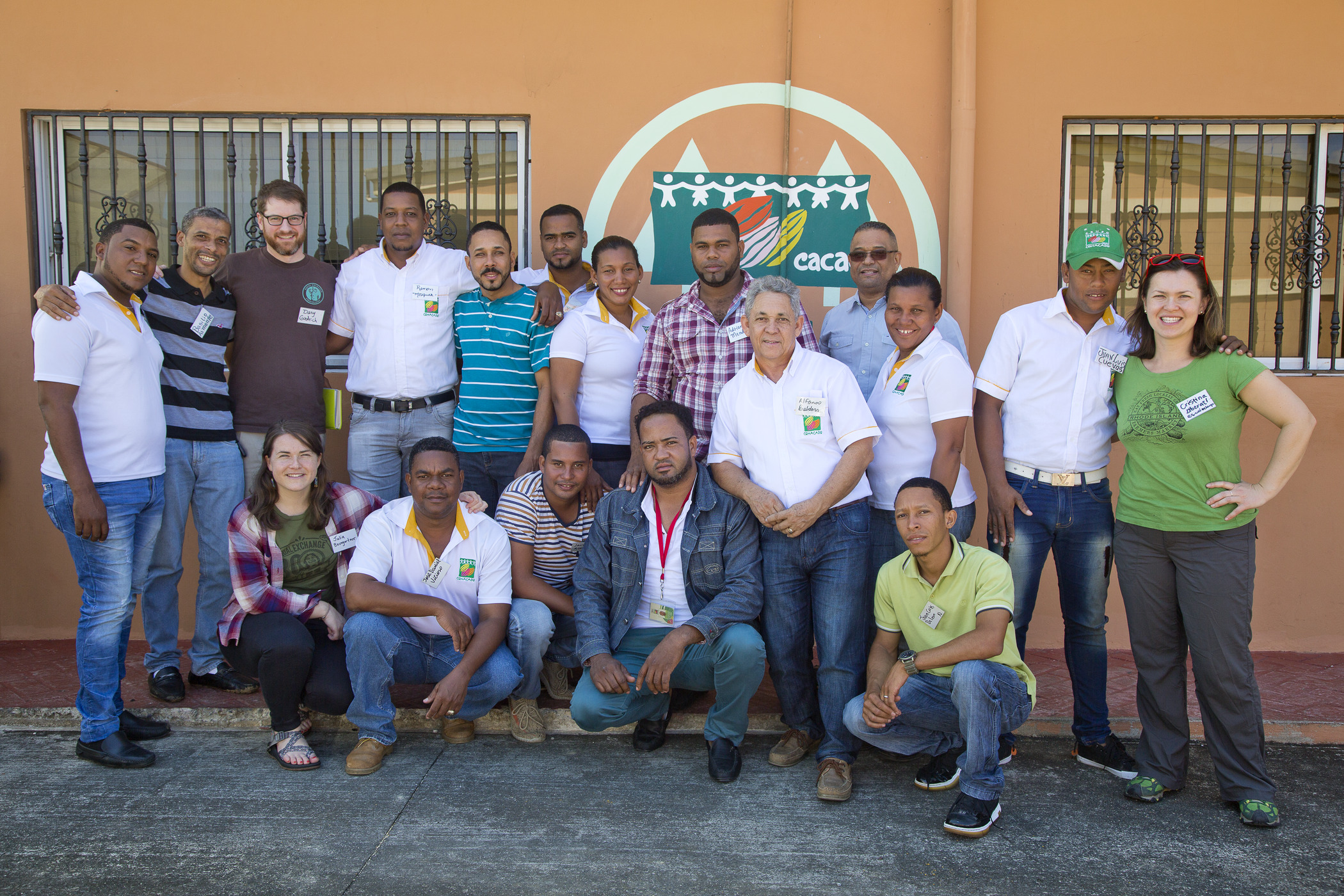
Q: The grants cover both cacao, coffee and banana farmers. All these crops may be grown in the same regions, but they’re totally different businesses. And you’re also working with project coordinators and grant consultants. What are your relationships like with all these different kinds of people? How do you balance that?
A: It’s a fun challenge, for sure. I have regular calls with each group or consultant that we work with, and that really just helps to keep on the same page of how the activities are developing. We also through our grant program helped to organize 15 different cooperative exchanges, where we brought different representatives from the farmer groups in our project together, to share information and learn about the activities they were doing and about those crops. I think my job is unique in that I get to serve as a nexus for all that information, so if I learn about how one group is, say, for example, identifying local trees with great productivity characteristics and cataloguing them, I can share — with their permission — what they’ve learned with another group who’s interested in the same type of activity.
Q: What about your traveling?
A: I travel about 30% of the year, and oftentimes what I’m doing is visiting with the cooperatives that are part of our project to see how the activities are playing out in person. Also, to troubleshoot any issues they might be having, because sometimes it’s hard to get people to talk about challenges and issues over the phone. It’s also great to just meet face-to-face with folks every once in a while. The other primary thing that we’re doing when we’re visiting our partners or these countries is holding workshops or the exchanges that I talked about, amongst different producers.
Q: Do you have trouble keeping people straight, just because there’s so many people?
A: Not really. I’ve been working with the same people now for almost seven years. The cooperative in the Dominican Republic has 10,000 members, so I don’t know everyone. But there are teams of people that I’ve worked with over and over. On farm visits, I try to visit farmers that I have met before and some that I haven’t. I always write a trip report, so I try to go back to my trip reports to refresh my memory of people’s names if I don’t see them or talk to them often.
Q: To what extent are you accountable to USAID? Who do you feel like is your boss and what keeps you accountable to this grant?
A: That answer is pretty simple. It’s the farmers that we’re trying to serve and that are our partners. We’ve been very lucky that USAID has been supportive of the work that we’ve done and of course, like anyone who offers you money, they want you to account for that properly and would like to hear about the outcomes of the use of that money, and I think that that’s fair. I also feel accountable to the worker-owners of EE that this is a good use of our time and resources as a cooperative. But I’ll stick with my first answer as to who I feel MOST answerable to.

Q: You do some quality-control work around chocolate. Is that right?
A: Yes. If I had to say I had a specialty, chocolate would be my specialty, because I did work in a chocolate factory before I came here, and it’s the crop that I know the most about, and it has been the largest focus of the grant. I’m on the Quality Control Panel at Equal Exchange, that meets once or twice a week to make sure that our chocolate is both high-quality and food safe for customers. I’m not going to complain about having to eat chocolate for my job!
Q: Equal Exchange has worked in different capacities with producers about analyzing their own products in country so that they can keep on track of whether tweaks need to be made, or how high quality their stuff is. Can you talk about that at all?
A: Sure. Beth Ann Caspersen, who’s the Quality Manager for coffee has been doing this for many years with coffee cooperatives. I do a bit more of it with cocoa cooperatives, but the ideas are the same. The way that chocolate makers analyze a sample of cocoa beans is by making it into chocolate liquor or a solid chocolate sample, and tasting it. For almost the entirety of the history of the chocolate industry, producers have been excluded from conversations about quality analysis that chocolate makers do. Through this grant and through a partnership with TCHO, we installed laboratories that would allow them to make chocolate liquor samples. And we work together with our partners to create a standardized tasting form and tools to train people to be cocoa tasters that were never publicly available before. And what these tools have allowed our partners to do is negotiate the value of their product with their clients, based on its quality. So instead of shipping a bunch of beans to a chocolate maker and then basically receiving a price from that chocolate maker that is determined by them, the producers can say, “We’ve tasted this. We know it’s worth this. And this is the price we’d like to ask you for it.” That has been a really exciting part of what we’ve done.
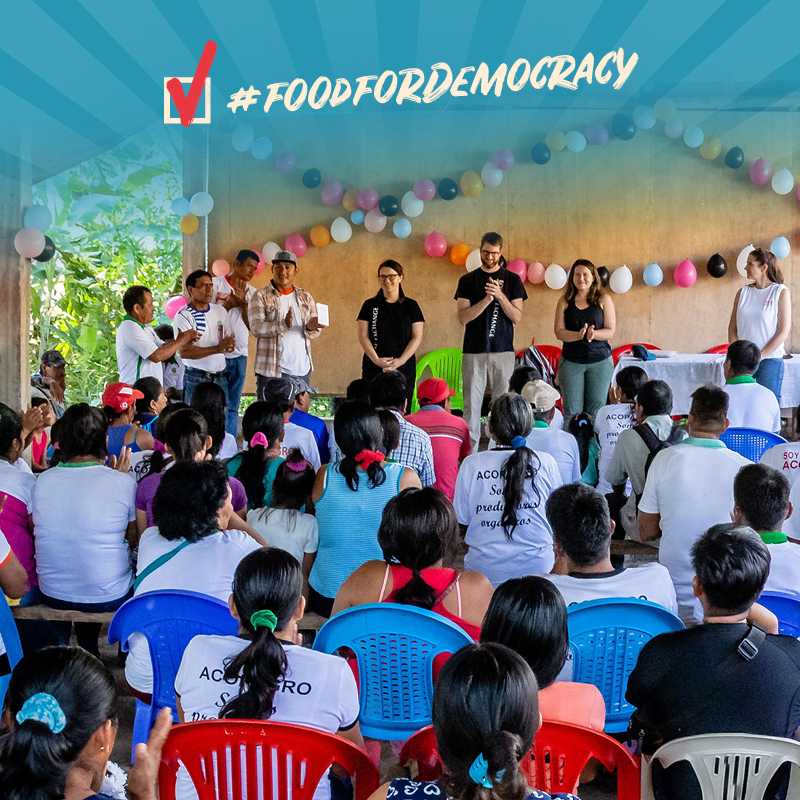
Q: What cool work stories do you have to share with us?
A: Last year, we decided to create what we call the Innovation Prize Program with our USAID grant and we were offering prizes up to $50,000 to cooperatives for new and novel ideas to tackle problems they had, either in quality, productivity, or what we call capitalization and one of the cooperatives that we work with called ACOPAGRO, based out of Peru, came to us with an idea for an irrigation program. The project manager there said to me, “You know, we’ve actually had this idea for some time, but couldn’t find funding for it, and I told my colleagues: ‘you know who we should ask about this? We should ask Cristina. We should ask Equal Exchange. Because they’ll listen to us and our idea.’” That felt really good.
Q: Did they get the prize?
A: They did get a prize!
Q: Can you tell me another story?
A: I was visiting Peru, a remote community along the riverbank of the Amazon, and the community members just had this incredible energy and were doing some wonderful things. They had formerly been coca producers for cocaine, and wanted to change from illicit crops to licit crops and were supported with growing cacao by a previous project. We went and we helped with some improvements to their fermentation area and drying area. But somehow, they found out on my first visit that I really like hot peppers. And when I came back for my second visit, they offered me a whole plate of hot peppers that they had grow specially for me to try. Which was fun, but also somewhat painful!
Q: Right, ‘cause you had to eat them all!
A: I took a few bites. I think I have a picture of that somewhere.
Q: Were they good?
A: Yeah. Oh my gosh. The food in Peru is incredible, in general. And part of it is because they know how to use those peppers!
Q: What are the lessons learned from this work?
A: I’ve seen, over the past few years, that several of our partners have had to deal with natural disasters that just seem to be more frequent and more intense every time. What I’ve learned is that the resilience of the people we work with is just truly incredible. One should never underestimate the strength, the creativity and the love for the land it takes to be a farmer. I definitely had no idea of the magnitude of that before.
Q: What’s your outlook for the future of fair trade, of farming, and of these specific communities that you have gotten to know?
A: That’s a big one. I think that fair trade or alternative trade — as a strategy and a philosophy — is more and more important every day. For me, the basis of fair trade is the relationships between the people who grow our food or produce other products, and then the people who use those products. And we do have opportunities, with technology, to connect with those people in ways that weren’t options before. But on the other hand, people continue to want cheaper and cheaper options. One of my friends told me recently that her grandparents used to spend 25% of their income on their food. Nobody seems willing to do that anymore. If people aren’t willing to pay for fair food, the farmers that we work with as it is barely get by. They do it for the love of the land that I talked about. Compounded by climate change issues, I’m not sure what that means. But people will keep eating, and they seem to not get tired of chocolate and coffee. Or bananas. So we’ve got to keep fighting to do this work the right way.
This fall, we’re posting content about Food and Democracy — and the important ways they intersect — up until the U.S. primaries on November 6th. Stay up to date by following the hashtag #FoodForDemocracy on Facebook, Instagram and Twitter!
Thank you for signing up for our newsletter!
Want to get others on board supporting an independent food system with a company that pays small-scale growers fairly? What if people ask tough questions? Let us help you explain why they should switch to using authentic Fair Trade products from Equal Exchange, a pioneer in the U.S. fair trade food and beverage industry.
Fair Trade products from committed brands are better for farmers, better for the environment and better for ourselves. A small change, like choosing fairly traded, organic products has a real and meaningful impact in all three areas. If you want to promote social justice, environmental sustainability and fair trading relationships, buying from Equal Exchange is way to connect your values with your actions as a consumer without sacrificing taste or quality.
Introduce Equal Exchange with this 2 minute video: Who We Are and What We Believe In or share these reasons to support Fair Trade with your office, school or place of worship.
Fair Trade is a way of doing business that aims to keep small-scale farmers an active part of the world marketplace. It’s not charity – it’s a sustainable and alternative trading model that helps producers make a viable living and stay on their own land while advancing many economic, social and environmental goals. Long-term trading relationships mean income that farmers can count on, year after year. When you buy a fairly traded product from Equal Exchange you know that a stable price was paid to farmers, significantly higher than the fluctuating market price.
By choosing Fair Trade products, you’re supporting a different kind of business model. One that is based on dignity and transparency. One without forced child labor that is not focused on profit-maximizing at the expense of others in the supply chain. Fair Trade premiums allow farming communities to decide collectively which development projects they want to use the money on, like improving access to clean water and education. Small changes we as consumers can make regarding what we choose to buy make a real impact on the quality of the lives of producers and their families. Read a more about Fair Trade principles here.
Often Fair Trade products cost about as much as other organic and specialty-grade products of similar quality. At local farmers markets in the US, many people are willing to pay prices that reflect the hard work of small-scale farmers because they know the care that their community members put into the organic cultivation of food on their farms. It makes sense that local farmers should make more than what it costs them to grow a product, so, the same concept should apply to products like coffee, cacao and tea that aren’t grown locally, right?
We believe a shift in perception of value needs to take place in the marketplace before Fair Trade products become the norm. Equal Exchange has been dedicated to creating an alternative trading model since 1986 and we are committed to continuing to build this movement. To help make fairly traded products affordable, we offer wholesale case pricing to everyone, even if you’re just buying for your home! Read a more in-depth answer to this question here>>
Traditional supply chains have many middle men that take a large percentage, but buying from Equal Exchange, who trades directly with small-scale farmer cooperatives, ensures that that more of the money you spend on coffee and our other products reaches the hardworking farmers who actually grow them. In fact, by the time you purchase from Equal Exchange, the farmers have already been paid and received pre-harvest financing so they can pay for expenses when they need the money. A fairly traded product also means that the producer has received a guaranteed minimum price for their harvest, regardless of the highs and lows of the commodities market. When the market prices are low, the price a farmer gets for their coffee harvest often doesn’t even cover the cost of production. When the market price is high, Fair Trade premiums paid to farmers increase even higher.
Farmers in the Fair Trade system get additional premiums paid to their cooperatives because they farm organically. These premiums go towards projects that their communities choose to improve their social, economic and environmental conditions. Access to clean water, education, and healthcare are basic human rights we all deserve and Fair Trade purchases contribute directly toward that advancement.
At the heart of Equal Exchange’s story is our relationship with small farmers. We work directly with over 40 small farmer cooperatives in 25 countries in South American, Latin America, Africa, and Asia to bring you high quality, organic products grown with care by people who take pride in their harvests. There are a variety of videos to share as well as different educational resources, including cooperative profiles, on our website.
There’s a big difference! Equal Exchange has been fighting for market access for small-scale farmers from the moment we were founded in 1986. We’re a worker-owned cooperative whose mission is tied to building a just food system where consumers have choices and feel connected to the people in the supply chains. And Equal Exchange works only with other democratically-organized farmer groups. When you buy from one of the corporate big guys you might ask yourself these questions regarding whom you’re supporting. Are 100% of the products they offer fairly traded? Are economic justice for producers and transparency for consumers among the top priorities for the CEO and shareholders? Equal Exchange operates independently with a more democratic business model and we’re not beholden to shareholders when making decisions that guide our company.
Another difference is quality and freshness! Did you know Equal Exchange expertly roasts our own organic coffee in Massachusetts daily with a team of quality control professionals? Each batch of coffee is “cupped” to make sure it meets the consistent and high quality standards we set for our coffees. We seal in the freshness on each package so it arrives directly from us to your door super fresh and delicious! Take a peek inside our roastery in this video.
And Equal Exchange partners with many relief, development and social justice organizations. Learn more about these partnerships here.
We believe Fair Trade is one tool of many that are needed to build power and more equity for small-scale farmer cooperatives around the world. The biggest problem from our vantage point has been the corporate takeover of Fair Trade. Certifiers invited big players into a system designed for and by small farmers and permitted them to weaken it to meet their needs. Equal Exchange continues to stay the course we initially charted to promote authentic Fair Trade that is in line with our mission.
There’s a great variety of choices in fairly traded and high quality apparel, body care, crafts and home goods and food from committed brands.
And if you’re interested in going deeper on food justice issues and building an alternative trade network we invite you to join Equal Exchange as a citizen consumer.
Looking for more?
Explore more Fair Trade FAQs from Equal Exchange >>
Read Fair Trade Fact sheet from the Fair World Project >>
Thank you for signing up for our newsletter!
This cake is inspired by the Ma’moul cookie, a time intensive cookie made of dates, semolina, and clarified butter. The white cake has a filling of dates, which have a creamy caramel flavor without the need for extra sugar. To mimic the look of the donut shaped date ma’maoul, you can bake the cake in a bundt pan, then cut the cake in half horizontally and spread with the date filling.

Recipe & photo courtesy of Blanche, feastinthemiddleeast.com
Equal Exchange crafts chocolate with only the purest ingredients. Whether you have a soy allergy, a chemical sensitivity, or you’re simply looking to avoid soy for quality reasons, we’ve got you covered. We use 100% fairly traded and organic cacao in the form of cocoa butter and chocolate liquor. In fact, fairly traded and organic sugar and vanilla are the only other things you’ll find in our pure Dark Chocolate bars. And our Milk Chocolate and Flavored bars are also soy-free. You can enjoy all thirteen varieties with confidence.
Soy lecithin is a food additive derived from the processing of soy beans. It’s used as an emulsifier. Soy lecithin’s job in chocolate is to blend ingredients and hold things together – it keeps the cocoa butter from separating from the other ingredients.
But we don’t use it. We take the long way around for the best quality.

Premium chocolate has a glossy finish and a pleasing resistance. It melts in the mouth, but snaps when you break it into pieces. To achieve this, chocolate-makers mix the ingredients in a machine called a conche that evenly distributes the cocoa butter. The addition of an emulsifier like soy lecithin can reduce the conching time. That’s why a lot of chocolate manufacturers add it – soy saves them time and work. After conching, the chocolate then goes through a tempering process. This process arranges the molecules in a certain way before the chocolate solidifies, optimizing the texture and the taste. Because we skip that short-cut, we achieve the right smooth, balanced flavors and texture through conching and tempering alone. The process takes a lot longer, but we feel the end result is better. We get the snap – without the soy.
Learn more about our process.
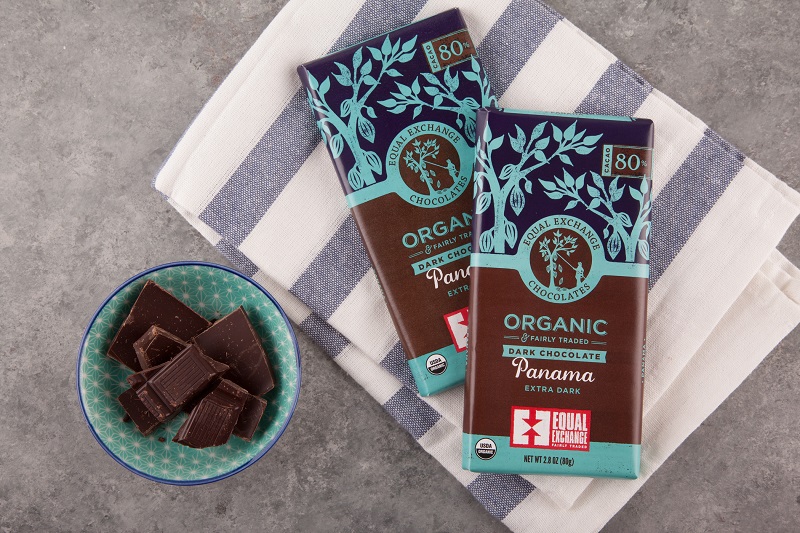
Here’s some more information to help you decide which Equal Exchange products you can safely enjoy.
Equal Exchange Organic Semi-Sweet Chocolate Chips (55% Cacao) and Organic Bittersweet Chocolate Chips (70% Cacao) are soy-free. In fact, they’re made in a dedicated allergen-free facility, with no peanuts, tree nuts, milk, eggs, soy, gluten-containing ingredients or wheat on the premises. We feel very confident recommending our chips to people with an allergy to one of the top 8 major allergens!
Our 80 gram Oeganic Chocolate Bars and Chocolate Minis do not contain soy or soy ingredients. We use organic and fairly-traded cocoa butter only, fully tempering the chocolate without adding soy lecithin as an emulsifier. Our manufacturing partner does not process soy ingredients in the facility where our bars are made.
Our Organic cocoas — Baking Cocoa and our three drinking cocoa mixes (original Hot Cocoa, Spicy Cocoa and Dark Hot Chocolate), contain no soy or soy ingredients. Though other products that contain soy are sometimes processed on the same equipment, our partners employ good manufacturing practices (GMP), cleaning the machines thoroughly between each product run.
Still have questions? Contact our helpful Customer Service Team at 774-776-7366.
Thank you for signing up for our newsletter!
when it became clear that the company was growing fast. We had many opportunities — like looking into building our own cafes, expanding the markets of our fair trade producer partners, and getting more advanced in the coffee products we were offering — but we’d have to make some big changes to take advantage of them. That is why the management at Equal Exchange proposed that we buy and move to a larger facility and build a roaster to roast our own coffee. And who was this proposal made to, you may ask? It came before the workers-owners of Equal Exchange, and in order for Equal Exchange to move forward with all these plans, the worker-owners would have to say yes, by way of a vote, by more than two thirds of the members present at the meeting this was proposed at. The good news is that in 2004, those worker-owners agreed to all three proposals (to buy, to move and to build) and we could not have grown the way we have since without those changes.
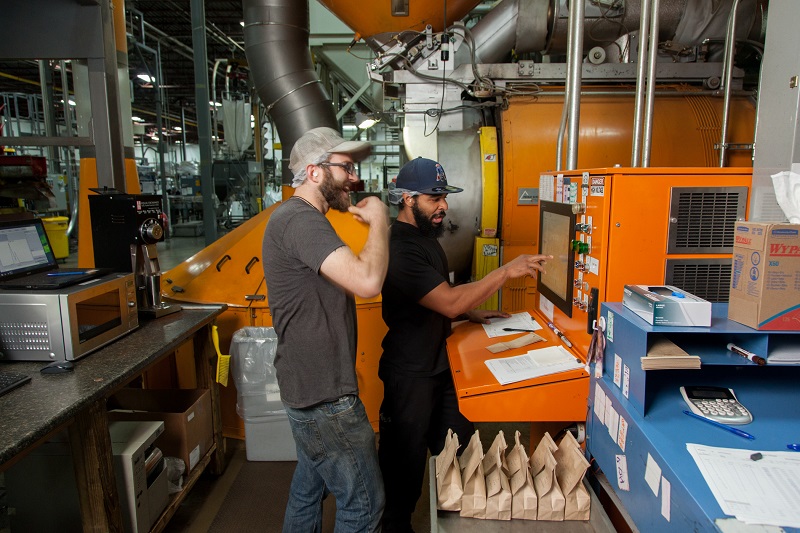
members rather than shareholders. Each member owns only one share and therefore has one vote in decisions, large or small. To say that there is a connection between cooperatives and democracy would be an understatement. All cooperatives were actually born out of the workers’ struggle for the right to vote which took place in mid-nineteenth century England. The Rochdale Society of Equitable Pioneers (now known as Cooperative UK) emerged out of that movement. Rochdale was the first successful cooperative in modern history, and is the longest running. Its founders believed that the axiom “one person, one vote” was so central that they made it a core principle in the Cooperative’s foundation. And they extended that right to both men and women, a good 80 years before woman in England were offered the same parliamentary option.
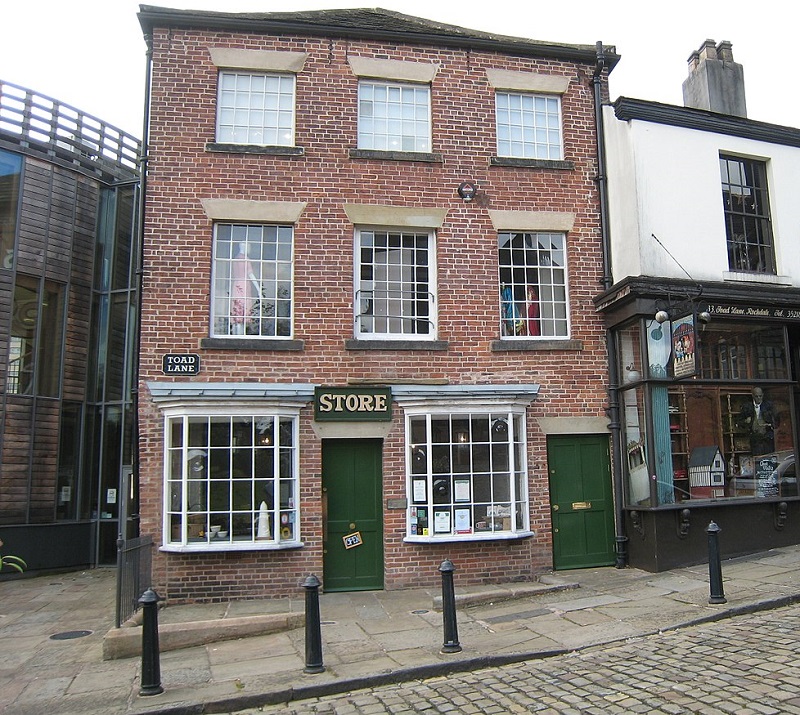
through member voting remains a central component to any cooperative, whether that be a consumer co-op, a worker co-op, or a farmer co-op. And it is this egalitarian principle that Equal Exchange values dearly – because it assures workers an equal distribution of power and voice. It’s a very powerful component of our work with our partners in producer co-ops, who had been self-organizing into democratic groups for almost 60 years before the Fair Trade movement took off.
In countries where power is concentrated in the hands of a very few, coffee, cocoa and tea farmer cooperatives offer a true democratic alternative, empowering many, and ensuring that democracy can thrive, even when faced with governments and groups who attempt to stamp it out. Each farmer, no matter how big or small their plot of land, has the same vote, the same voice, and the same power. It is important to note that due to the power that was generated by these farmers’ collectives, Fair Trade labeling organizations began to require the structure that was already in place in many parts of Latin America. Coffee farmers must be organized in democratic cooperatives in order to be officially recognized and sell their coffee as a fairly traded product. And it’s this requirement for coffee farmers that motivated the early leaders of Equal Exchange to shape the organization as a worker cooperative. If farmers organized themselves in this manner, we decided we should follow suit.
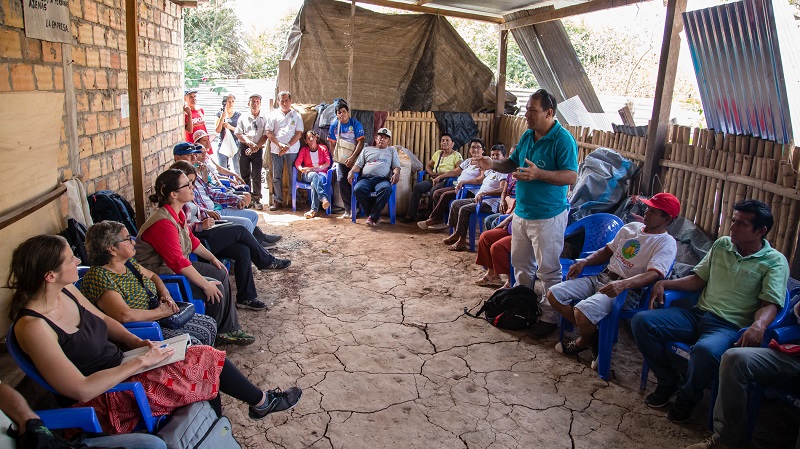
at Equal Exchange are members of a worker cooperative. All regular employees at Equal Exchange who have been here for longer than a year have to be voted on by other worker-owners to become co-owners of the organization. Each person then receives one share, and thus, one vote. Each worker gets to choose who represents the workers-owners on its board of directors. Workers serve as six of the nine board members. Therefore, in that historic vote in 2004, each worker-owner — whether their job entailed answering phones, packing boxes or overseeing operations — had the same one vote, no more and no less.
Due to our model as a co-op that purchases from farmer co-ops, and pays a fair price, U.S. food co-ops and their members made up our earliest supporters. These consumer co-ops use the same organizing structure: one consumer member, one vote, just like the Rochdale Pioneers. We owe the Equal Exchange model and the model of working with small farmer co-ops to those visionary thinkers who championed democracy through fighting for the right to vote.
This guest post was written by Aaron Dawson. Aaron was an Equal Exchange Board Member, the Treasurer of the Democracy at Work Institute, and has served on the Board of the US Federation of Worker Co-ops. He completed his Masters in Management, focusing on Co-operatives and Credit Unions at St. Mary’s University in Halifax, Canada.
This fall, we’re posting content about Food and Democracy — and the important ways they intersect — up until the U.S. primaries on November 6th. Stay up to date by following the hashtag #FoodForDemocracy on Facebook, Instagram and Twitter!
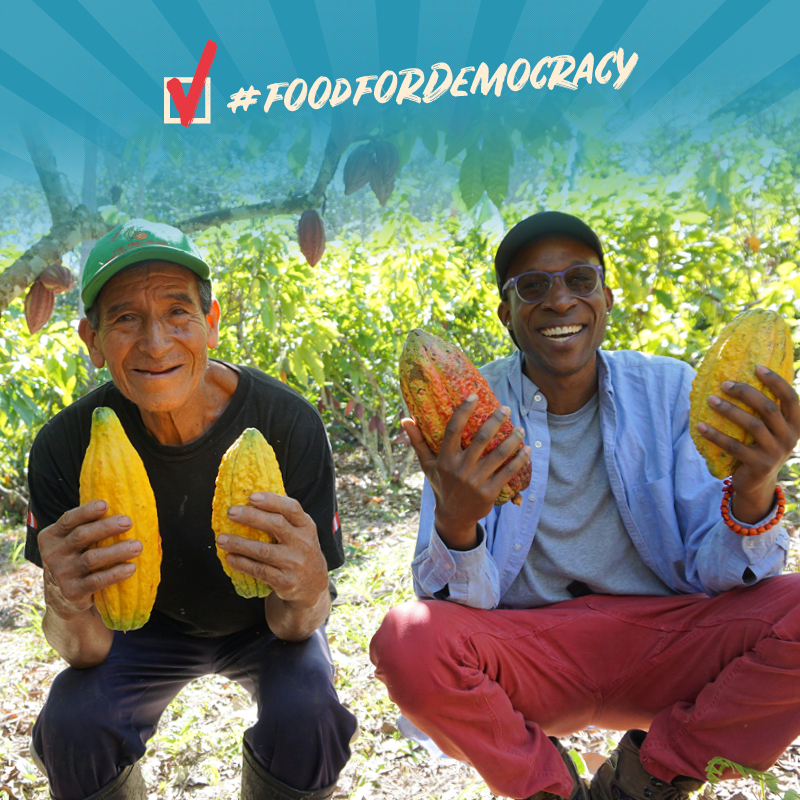
Read more about the story of the Rochdale Pioneers.
This guest post was written by Rev. Cynthia Wickwire Lundquist (pictured above, left, with Anneliese Bruegel, manager of the Fredonia Farmers’ Market.)
It happened at a planning session for our church mission program. We had recently established a food justice program and wanted to expand it. “How could we better serve our community?” we asked ourselves. And one of our church leaders said, “Why don’t we sell our fair trade food at the local farmers market?”
We had sold some Equal Exchange products to our church members for several years. Then we started to use the coffee in our coffee hour, then the sugar packets, and eventually the compostable paper cups. But this was a chance to do more. It would allow us to take the message of fair trade beyond our four walls.
It seemed to be an inspired idea in the truest sense. First, we were in a university town so we felt sure that there would be a market for these organic and fair trade products. Also, it meant that we were expanding our international mission outreach in that we could increase our support of the farmers all over the world who are Equal Exchange trading partners.
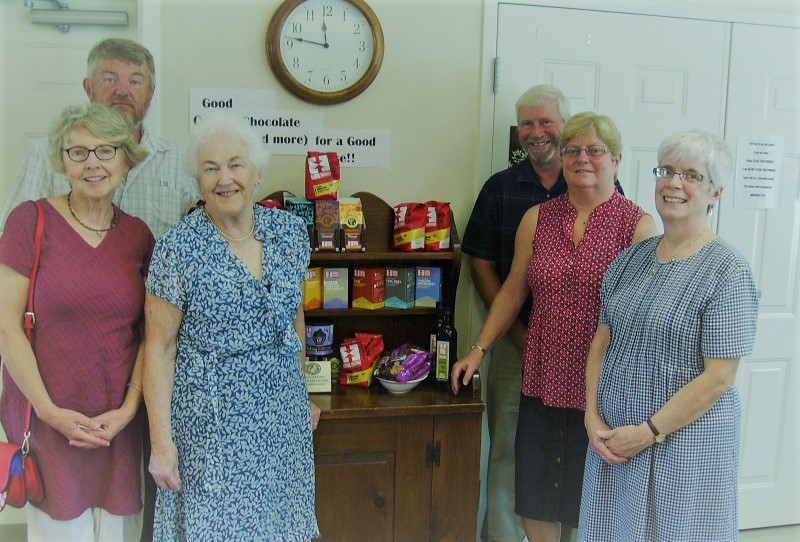
But, we asked ourselves, would the farmers market welcome us? Their mission was to provide a market for crops raised by local farmers. We made contact and described our goals:
We also agreed to sell only products not carried by our local farmers, such as granola bars and jams. Finally, we told them that we would be selling the products at essentially wholesale prices so this was a non-profit endeavor. (In fact, we did round up the prices in a few cases. We use this to cover the cost of renting space at the winter indoor market and the cost of a tent, tables and display pieces. If we ever make a true profit, we plan to donate it to the Fredonia Farmers’ Market.)
Bring Fair Trade to your OWN Farmers Market with these tips >>
Then the market agreed to let us come and the experiment started. And what a success it has been! We are now in the top 5% of Equal Exchange’s sales to churches and community groups.
But that was not the biggest surprise. The biggest surprise is that our presence has benefited the farmers market. At the beginning, we only participated twice a month (two Saturdays out of four) but soon, if we weren’t there, people began to ask about us. We became a draw for the market. As the market manager said recently, “It is a symbiotic relationship.” They helped us spread the word about fair trade and we helped them bring more customers to the market. And the real winners are, of course, the farmers near and far.
Now, we have expanded our participation in the market and the variety of products we sell. We are grateful to Equal Exchange for their high quality products, of course, but most of all, for helping us expand our ministry of food justice for all.
This summer, Equal Exchange brought our coffee and chocolate on the road to Austin, Texas for the 79th General Convention of the Episcopal Church. We shared a table with our partners at Episcopal Relief & Development and poured out our fairly traded brew to all comers.
Over the course of nine days, we had a lot of wonderful conversations about fair trade values, fellowship, and favorite blends! People were excited to hear about the new low price of Organic Breakfast Blend, which makes it easier than ever to serve it at church.
Here’s a mosaic of just a small sampling of the folks who enjoyed our coffee, with their names — and their thoughts — below.

Read their stories, in their own words.
1. The Very Rev. Joseph Kerwin Delicat, Dean of Holy Trinity Cathedral, Port-au-Prince, Haiti
The newly elected bishop coadjutor of the Diocese of Haiti stopped by the Episcopal Relief & Development booth to enjoy a cup of Equal Exchange coffee!
2. Carol Folbre, St. John’s Episcopal in New Braunfels, Texas
“I’m part of a Ministry of Contemplative Action (MOCA). The philosophy is to go to social action events together and then reflect. Coffee is perfect for this ministry. We use the phrase ‘sip by sip.'”
3. Captain Louis Cavaliere (U.S. Navy Retired), Grace Church, Merchantville, New Jersey
“The coffee is great and the dark chocolate is good for you!”
4. Sharon Hilpert and Ardel Hansen
These two women stopped by the booth after going by bus to show solidarity to the women at the Hutto Detention Center in Taylor, Texas.
5. Terri Bays, Church of the Holy Trinity, South Bend, Indiana
“I’m the poster child for coffee addiction.”
6. John Chilstrom, St. Matthews Episcopal, Austin, Texas
“Before the end of General Convention, I wanted to make sure I placed my first order for coffee, and I did — online!”
7. Ann Bustard, Christ Episcopal Church, New Bern, North Carolina
“My favorite Equal Exchange coffee is African Roots.”
8. Margaret Moses, Church of the Ascension, Mt. Vernon, New York
“Your coffee is delicious. It’s a nice roasted flavor which reminds me of Blue Mountain coffee in Jamaica, where I grew up. That’s why I keep coming back.”
9. Chad Brinkman and Sean McConnell, Episcopal Relief & Development staff members.
“Both of us love the Equal Exchange dark chocolate bar with Lemon, Ginger, and Black Pepper. It’s our favorite.”
10. Sarah Lawton, St. John the Evangelist, San Francisco, California
“We use Equal Exchange coffee every Sunday. It tastes really good. We have a lot of connections as a church to Central America. We know that coffee is so important to that region and we like to support farmers there.”
11. Abraham Ndungu, Trinity Episcopal Church, Columbus, Ohio
”Fantastic coffee, super chocolate.”
12. Xerxes Eclipse, Episcopal Relief & Development staff member.
Xerxes enjoys coffee and coloring at the Episcopal Relief & Development booth.
13. Timothy Kimbrough, Christ Church Cathedral, Nashville, Tennessee
“I could not have gotten through General Convention without it. It’s been my pick-me-up through the afternoon sessions. Thank you for being here.
14. Bernice Turner, St. Katherine’s Episcopal Church, Baltimore, Maryland
”I love the taste of your coffee.”
15. Alex Merritt, St. David’s Episcopal, Austin, Texas
“Episcopal Relief & Development does so much important work; it’s work that impacts some of the world’s most vulnerable people. And the coffee is delicious.”
This recipe has elements of sweet and savory, zesty and crunchy and goes well with any main dish or atop a bed of quinoa or other grain.
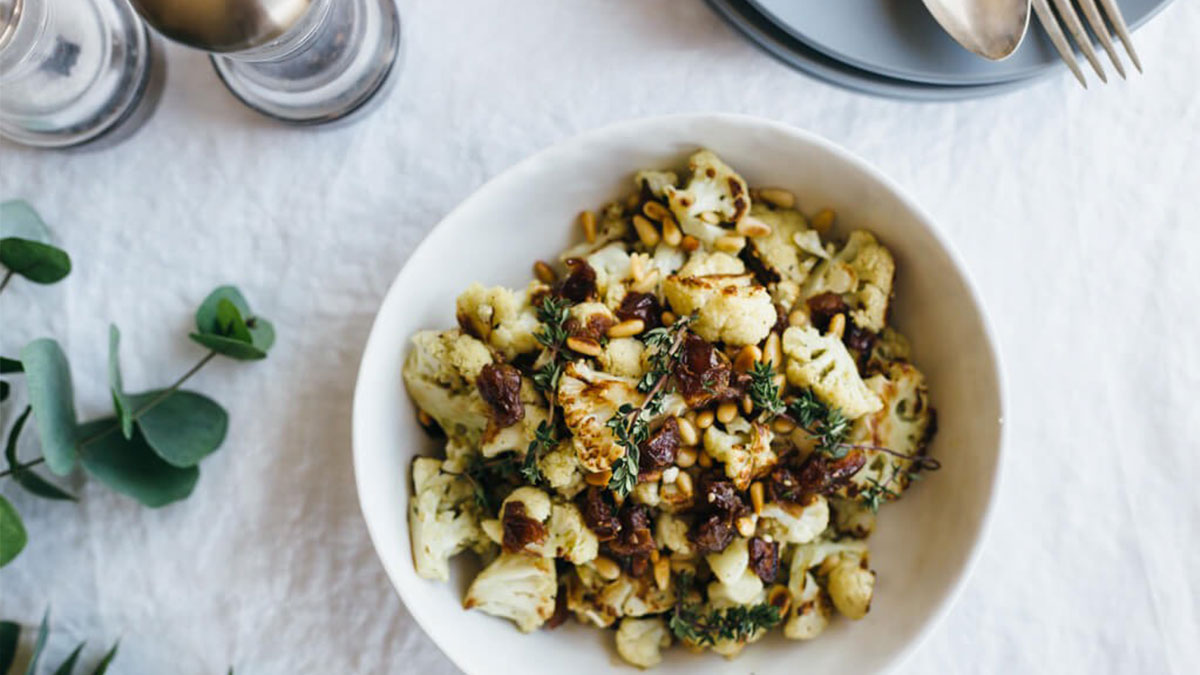
Recipe & photo courtesy of Blanche, feastinthemiddleeast.com.
By Jennifer Pruess, Equal Exchange
Equal Exchange has been operating in the Portland, Oregon area since the mid 1990’s. As a worker-owner of Equal Exchange, I was curious about this transition of the company from being east-centric to bicoastal. How did it all begin? Who was involved? What is the unfolding story and how did it take shape? Where did we come from and where are we going?
Luckily, Equal Exchange still has several key figures in its ranks to speak with, so I first spoke to fellow coworker and co-owner, Tom Hanlon-Wilde. Through this process, many more names have risen to the surface, bringing with it the opportunity of sharing many more stories of how Equal Exchange has grown over the years. I hope to share the story of Equal Exchange and its presence, purpose, and mission in an ongoing series. To start things off, here is the conversation Tom and I had late July, 2018.
I want to hear about how you started with Equal Exchange. What was your role in the beginning?
I started when we were in Stoughton. I had worked for the government on Latin American economic development and activities and then I went to work for a private company startup importing fresh produce, alternative trade with Latin America. It was nice to do a government job but depending on tax money was a downside. Working in the private sector was good but there wasn’t as much a development aspect in just the business side of it.
When I was done with the produce job, I was out shopping at the local co-op near our house out here in Allston, Massachusetts. and there was a sign up for Equal Exchange hiring a sales rep and one of my friends was like you should apply for this and when I came here I was like “Oh, this is where all my folks are.” I interviewed and started in March 1995 at Equal Exchange and we were in a small warehouse in Stoughton, Massachusetts.
Ok, Wow! That was even before we were located at what I refer to as “Head Quarters” out in West Bridgewater. You started off as a sales rep and then how did the topic of Portland or going out West emerge?
We were doing a four-year strategic plan at that time and we kind of broke up the work to draft different ideas on what could be in the Strategic Plan. We had had a really good group of co-op customers out West — Bellingham and PCC, Food Front, Rainbow, and Olympia. We even had the second privately owned grocery store to ever carry an Equal Exchange bulk bin unit, a coffee unit, that was Storman’s Thriftway Bayview Market in Olympia.
Rink (Dickinson, co-founder and co-executive director of Equal Exchange) and Mark (Sweet, previous board member) and I included having a regional office in the West as part of the strategic plan just to be out there more with more people, on our customer’s own time zone and everything. Jennifer, my wife, and I were willing to go because we were at a point where we were willing to try living somewhere else. When opening an office in the West was approved as part of the strategic plan, Jennifer and I took a small leave of absence because I had never really had lived at origin with small scale farmers. My wife and I stayed in Condega and Estelí, Nicaragua, with PRODECOOP – a coffee co-op EE still buys from – for five months and then flew from Nicaragua right to Oregon to open the West Coast office for Equal Exchange.
I was just working out of our apartment at that time and I visiting accounts and we definitely got new customers. There was a need for more work, it was drafted, it was put in the strategic plan and then it got done. It was one of those weird things – a plan that went according to plan.
So, it started because you had accounts out here, it sounds like. Big supporters like Storman’s Thriftway, PCC Markets, and local co-ops. Equal Exchange landed some accounts out west and, if I understand correctly, you all thought strategically that it would be good to have more presence out here where you were starting to get these accounts?
At that time on the West Coast, Equal Exchange and fair trade was kind of a new idea for those accounts. We talked to them, introducing them to the idea of fair trade with democratically organized, small scale farmers. We were calling them from Massachusetts, but, you know, we were three hours away in the time-zone and ten days away with deliveries. Not that many people were willing to go through all of that. But when I could visit accounts personally and sign up some new ones, things grew faster. I think one for me, a real breakthrough was Nature’s Northwest, a chain in Portland (part of that group, later formed what’s now New Seasons Market). All the consumer co-operatives made things possible, then Nature’s was an important breakthrough account for me and a bunch of the Thriftway’s, family-owned grocers in the Seattle area were also super supportive.
Shortly afterward, Todd (currently working as our Director of Purchasing and Production) and Beth Ann (currently working as our Quality Control Manager) moved out west. Todd had gotten hired at Equal Exchange out here in Massachusetts and then he came out to Oregon, and he won a bunch of accounts. Beth Ann happened to be living in Oregon at the same time, so we brought her over from the company where she was working back to Equal Exchange. She got new accounts for us, like Bulldog News up in Seattle, and it kept rolling from there until we needed a warehouse.
The first warehouse location was actually out in Gresham, correct?
I lived out in Mosier, because that’s where my wife got her job, and I was just working out of the home. Todd wanted to stay in Portland, so we rented a small place in Gresham which was not a great space, but, it got us through until kind of the next stage. Then Todd and Beth Ann moved back to Massachusetts to get the roaster started at what you would call “headquarters.” Rink proposed having them do that, which was brilliant.
At that time, you know who else was really key?
There was a person who is now at Life Source Natural Foods in charge of marketing, Roxanne Magnuson, she had been working for a food broker that represented Frontier Coffee. We always won accounts away from Frontier except in Portland. I remember wondering “what’s going on?” But then Roxanne and I had lunch at Marco’s Cafe and I figured out it was her that was basically doing that. When she came to Equal Exchange, then we got all kinds of stuff. We got New Seasons private label, she was a big part of that. Natural Grocers, to me, she won that account single-handedly, and that was a major one. Back when Roxanne started at Equal Exchange, she not only just got us new accounts for the bulk side of things, she helped develop our entire grocery strategy. All the retail packaged coffee, tea, chocolate bars. She was really good at using brokers and distribution systems and figuring out that system.
It sounds like it was a time for really laying the foundation for introducing fair trade out here in the west to accounts and getting that off the ground, slowly kind of building momentum? Hood River for four years, was that next to the brewery downtown?
We were in Gresham and then Hood River for four years. In Hood River, the Equal Exchange warehouse was there, Island foods was right there, and Full Sail Brewery, which was worker-owned at the time. We definitely had a nice little enclave of progressive businesses. That’s how the Provender Conference ended up being in Hood River.
We started shipping coffee, people were getting accounts their orders in a day, instead of three days from the east coast or ten days from the east coast. That was super key for us in improving that level of service the customers received, allowing us to focus more on talking about the farmers and what it’s about. We were just going through a big boom. Coffee was going through a nice wave, fair trade and organic coffee was gaining popularity, so, as you approached stores, you could just switch them over from what they were doing to what we were doing.
The other key people in all of this was PCC. Rink and maybe even Michael had set them ups as customer when EE started. But they were key to our evolution. You know how there are friends that say nice things to you, but your really good friends that will say mean things to you that you need to hear. Well, PCC was one of those really good friends. At some point, they were like: “You know what guys? This is nice, but if you’re not going to come deliver to the store, we’re not going to carry it. Everybody else comes in and puts it in the bins and cleans the bins.” They said: “You’re going to have to do that or get out.” They gave us a long lead time and we started running a truck and making a delivery system.
You ran a truck from Portland to Seattle to get to them?
No, we hired somebody in Seattle, Scott Serchen. That was great. He did that for years and got us into Madison Market as well and was our Seattle delivery person. He really helped us get our delivery system going in the West and almost nationally, right? It was one of the biggest, highest volume route for a while. So, he stayed with us for many years, and bless his soul, after he left Equal Exchange he only lived five more years. Young guy, but yeah, that was one person who I got to work with and is no longer here. Jim Feldman is another person. He was a community organizer.
Go ahead and speak about Jim. I definitely wanted to make sure to ask you about Jim today and his work with Equal Exchange, especially in the early days.
He was one of the community organizers we hired to really do some outreach and grow what was going on at the grassroots level. Jim helped us develop some grassroots organizing in the West and build some momentum. And he was a key person when we outgrew the Hood River office and moved to Portland. Those two, Scott and Jim, are really key figures in what happened out west and yeah, I miss them both.
Then you all are hanging out in Hood River while Equal Exchange was experiencing really steady growth locally. Operations were expanding and the momentum was building.
We had to move every four years because we kept growing! We outgrew the office and went to a warehouse and outgrew that. We signed a lease for five years and outgrew it in four years and moved to the Portland building on Main Street. I think we signed a five-year lease and outgrew it in four years and had to come over to Northwest Industrial.
I would argue that Equal Exchange West has way outgrown Northwest Industrial. Now that we have all the chocolate for shipping to distributors in the West in the Portland warehouse, it’s going to be bursting at the seams. If you look at the coffee roasting in the west, we’re not roasting in the West. If we brought that in-house, you know, then that building wouldn’t be big enough for us.
Absolutely, I think it’s something to think about as we are in such a coffee mecca. One of my questions I have on here is the line of products and main customers. I feel like you got to that already. It was definitely coffee and then you started in on the grocery set. Is that correct?
From what I remember, and I might be a little off by a year or two, we really focused on placing bulk bin units of coffee, bulk coffee because that was a real way to get a store to make a real commitment to what we were doing. For me, that argument that I would give to the stores and I would still make here is if you dedicate a four foot display of bulk coffee in a supermarket, basically that bulk unit will move as much coffee as a farm-family grows. It’ll move a ton of coffee through there and that’s about what a farm-family produces in a year.
So, get a family-owned grocery store, community-owned grocery store to dedicate, at least do one farm-family’s harvest for your set here, to do fair trade, co-op supply chain. Of course, some stores do much more than that. One bin at Rainbow Foods does as much as a farm-family grows in a year. And as you add cashews, almonds, and other things, you can really capture that average farm-family’s growth. Like 6,000 chocolate bars, that’s what the average farm-family grows in a year using cocoa beans. So, that’s a real way to kind of make it real for the store, but also get the store to dedicate something substantial.
To really focus on the bulk side of it was good, and after Equal Exchange did well, we started to say: “Hey, let’s try to relaunch package coffee, relaunch packaged tea, and let’s expand the chocolate bar line.” How do you get that to stores if it’s one of thousands of grocery items they carry inside their stores using the existing distribution system, using the existing broker network? Roxanne helped me really think through that piece of it and I think that you could argue that went really well between 2005 to 2015. We really ramped that side of it up and that grew real strong. It always felt like it was never as successful as it should be and I think looking back, it probably was just ahead of its time. Whereas now, that tea line and that packaged coffee line does quite well and I think all that footwork that Jim, Roxanne, Todd, Beth Ann did in years past is starting to pay off.
Just reflecting back on our presence in Portland over the past roughly twenty years, do you have any highlights, moments that still stick with you to this day?
To me there are a few. One of Juana Pezo Suero, who was vice president of the women’s group of a coffee co-op from Cusco, Peru. When she was standing at a PCC store speaking about the importance of fair trade during the WTO, that was a time when I felt like we had very strong presence. A farmer, to my knowledge, the first woman coffee farmer in the fair trade system, at a store in Seattle, was just great. She was touring northwest. This was 2000, WTO is going on, and I remember Todd came back with a pin from a teargas grenade from that weekend up there. So it was a major time I think in people’s consciousness of trade and they realized Equal Exchange was way ahead of the curve, having Todd and Juana up in Seattle speaking at PCC, at Olympia Food Co-op, and other places at that same time that was fantastic.
And then we started taking our customers down to live and work with the farmers for a few nights every other year and we did that every other year from 2001 to 2017. Overall, managers and owners of grocery stores that sell half a billion dollars a year have traveled with Equal Exchange to live and work with farmers in their houses. Those are the things that I remember and that seem super important. Bob from El Cerrito, Mike from Bellingham, Sanya from Ashland, Bill from Briar Patch, it’s been decades of these relationships, that’s what I think about.
I did want to take this opportunity to talk about Jim and the work he did for Equal Exchange, especially in those early days. Again, it sounds like you did cover that a little bit. Is there anything else you’d like to share about Jim and the work he did?
I would certainly say Jim was so caring for his coworkers, our customers, the activists who supported Equal Exchange. That care just came through and people remembered it. And for me, one of the things that I really remember is him calling me from Seattle and saying: “Hey, I just found out that Seattle’s Best Coffee is getting out of the bulk coffee business.” So, he and I talked about what to do. Then he very carefully and respectfully went around to all the family-owned grocery stores that had a Seattle’s Best bulk coffee unit, Starbucks was discontinuing that program, and he had to tell them: “Hey, you’re not going to have this in your store anymore.”
They didn’t really believe him because they hadn’t heard it either. He heard it before the customers even heard it. He then very carefully brought them up to speed on what was happening in a compassionate way, letting them know what was happening and of course that lead us to placing eight Equal Exchange bulk displays in a three-week period. To switch all of that over, he took really good care of those family-owned grocery stores in such a respectful way, but in such a way that a lot of volume moved over to co-op supply chain. It’s just had this lasting impact so, yeah, I still think of that key time when because he was taking care of people really well, he was way ahead on what was happening out there and was able to help people make a really positive transition.
So, Tom, you’re like a moving piece in the Equal Exchange story, like you seem to go where you’re needed and where Equal Exchange needs you the most. Do you still consider yourself rooted in the Portland office? Your work has taken you many places. Do you want to reflect on that at all and maybe where you see the Equal Exchange presence in Portland continuing to grow?
Yeah, one of the many, many things I love about working at Equal Exchange is that you work as an owner. So, you get to act as an owner and I think when we’re discussing how to support, how to keep the worker-owned co-op dedicated to fair trade in Canada going, I was able to be like yeah, I think I can spend some time there to do that. My family all moved with us for a year to do that and I still go up there every month. I like that about Equal Exchange – work like an owner. When I think about it right now, I’m an owner of Equal Exchange and I work for La Siembra to kind of bridge the gap between our two co-operatives and I think that’s really fabulous.
As I think about the West piece of it, there are so many great opportunities. Not just on the sales side, but on the community outreach side and on the production side of things. That it really makes for an exciting place. You and everybody else in the Portland team haven taken the thing way further than I’d taken it. The warehouse has been great in moving it forward and I hope that all of us, me included, get to have those chances to keep acting like an owner as things grow and new opportunities develop. We can build an authentic co-operative supply chain that puts people before profits.
Is there anything else you’d like to add to this conversation about Portland?
Yes, I think the other really neat thing about Equal Exchange West that not many of the other divisions of Equal Exchange has, but not many other companies do, is that we have drivers. We’re a team that gets out to the stores every week. We’ve always dedicated a bunch of time for that. At first we were kind of forced to by our good friends, but we tried it and it has worked. We have people that are in the stores all the time with our Equal Exchange hats on. That changes the dynamic, it changes the conversation, and I think that’s been one of the things that provides some opportunity going forward. If you’re there, you’re local and if you’re local, people appreciate that.
Fun questions, Jen!
Good! Thank you so much, Tom!

